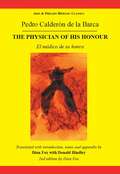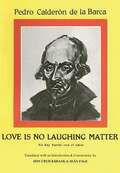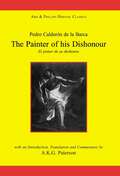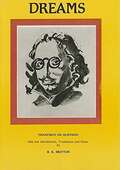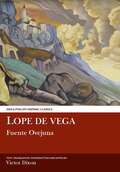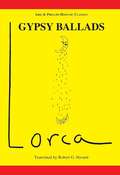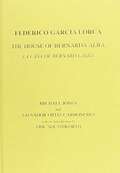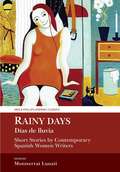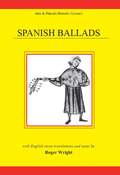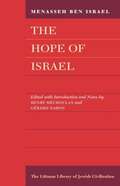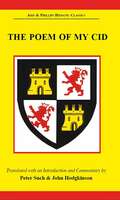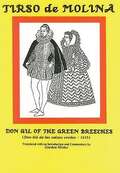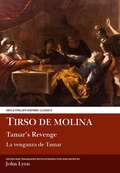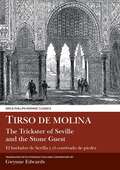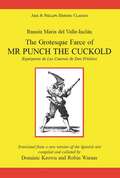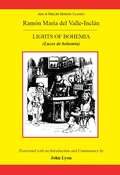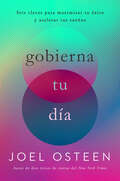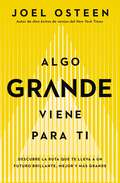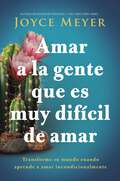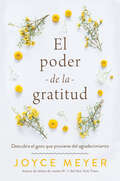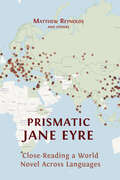- Table View
- List View
Calderon The Physician of his Honour (Aris & Phillips Hispanic Classics)
by Donald HindleyOne of the most intellectually and emotionally engaging of the Spanish Golden Age (seventeenth century) plays, as well as the most controversial. Taking place during the reign of King Pedro of Castile (1350¡1369), it is one of the spectacular 'honour dramas', in which the main characters confront compelling yet conflicting imperatives. The Physician of His Honour is beautiful in its poetry and unsettling in its resolution. For more than 350 years the play and its author have been as fiercely reviled as they have been enthusiastically acclaimed by audiences and readers. First published in 1997, for the second edition the translation has been extensively revised, with the aim of simplifying the English, whilst continuing to respect and acknowledge as much as possible the beauties and challenges of the original Spanish.
Calderon: Love is no laughing matter (Aris & Phillips Hispanic Classics)
by Sean PageAlthough Calderon's comedy has received rather less attention than the other genres in which he excelled, it is widely acknowledged that his comic plays are inrivalled among his contemporaries in terms of plot structure and technical expertise; they also explore contemporary issues to an extent which has not been appreciated. Love is no Laughing Matter is one of the best, in which the dramatist casts a sardonic eye on male chauvinism, women's education and social snobbery. This is the first complete text of the play to be published since 1650. Spanish text with facing-page translation.
Calderon: The Painter of his Dishonour, El pintor de su deshonra (Aris & Phillips Hispanic Classics)
Alan Paterson presents Calderon's original text, from manuscript and printed sources, with a skilful verse translation into English of a remarkable play, in which Calderon develops the motif of marital honour in quite original ways. The blending of deep pathos and humour anticipates the modern theatre of the absurd, though Calderon is pushing to the limits the license gained by Lope de Vega to mingle tragedy with comedy. The play incorporates important aesthetic ideas of the Renaissance on painting and the character of the artist. It must be unique in seventeenth-century European in dramatising the painter as he works in his studio and meditates on his art. Since the play deals with the aesthetic component in human behaviour, its own aeathetic status as a verse drama had been conserved in the translation. Those with no knowledge of Spanish will find a text which is agreeable to read and to perform. The translation is close enough, however, to offer the reader of limited ability in Spanish a reliable key to the Spanish text. Spanish text with facing-page translation, introduction and commentary.
Calderon: The Schism in England: La cisma de Inglaterra (Aris & Phillips Hispanic Classics)
by Kenneth MuirAdmired by Shelley for 'its satisfying completeness', this thought-provoking and skilfully constructed play, which dramatizes the same subject as Shakespeare's Henry VIII , is one of its creator's most outstanding achievements. Understandably, Calderon offers an interpretation of King Henry's divorce from Catherine of Aragon and break with the Church of Rome which is markedly different from that given in Shakespeare's work. Yet, despite his Counter-Reformation allegiances, Calderon brings Henry VIII sympathetically to dramatic life. The schismatic English monarch is portrayed by the Roman Catholic Spanish playwright as a man endowed with moral awareness and with exceptional talent for spiritual leadership, who is, nevertheless, morally and spiritually destroyed by his extraordinary surrender to the forces of physical passion. In this first published translation of the play into English Kenneth Muir and Ann MacKenzie have adhered to methods effectively adopted in their previous books ( Four Comedies by Calderon, and Three Comedies by Calderon). They have composed, almost entirely in blank verse, an accurate yet elegantly poetic version, after the manner of the Elizabethans, but avoiding vocabulary which might seem affected to a modern audience, in order to produce a 'script' that could be performed with success on the stage. The critical edition, prepared by Ann Mackenzie to accompany the translation, is based on the editio princeps (published by Vera Tassis in Calderon's Octava parte de comedias [Madrid, 1684]). Her substantial Introduction and comprehensive Commentary together constitute the most detailed critical evaluation accomplished to date of this key-drama from the Golden Age in Spain. The Introduction, in particular, supplies new evidence as to the date of the play (1627) and the circumstances of its composition, and provides an analysis of Calderon's creative treatment of his historical source-work: Ribadeneyra's Historia eclesiastica del cisma del reino de Inglaterra (1588). Spanish text with facing-page translation, introduction and commentary .
Francisco de Quevedo: Dreams and Discourses (Aris & Phillips Hispanic Classics)
The Suenos is one of the most controversial, witty and fantastic works of early 17th century Spanish literature. The five Dreams minutely analyse stupidity, ignorance and evil, as these could be found in contemporary society. The work's serious moral intention, often masked by the author's pointed anger, scabrous wit, wide learning, love of verbal gymnastics and surreal flights of imaginative fantasy, has for 350 years presented a challenge to the translator and the student of Hispanic culture outside the Spanish speaking world. This first full English translation of the Suenos since 1688 is accompanied by the Spanish text, and Dr Britton's own introduction and notes help the modern reader to understand the numerous historical and literary references, to elucidate the various linguistic devices and to sketch in the intellectual, moral and religious background of the text. Spanish text with facing-page translation, introduction and notes.
Lope de Vega: Fuente Ovejuna (Aris & Phillips Hispanic Classics)
Fuente Ovejuna (C.1613) is the most famous and frequently performed play by the creator of Spanish theatre, Lope de Vega (1562-1635). Astonishingly for its period, it celebrates the murder in 1476 of a nobleman, the Grand Commander of the Military Order of Calatrava, by the peasants he had oppressed, and their subsequent solidarity under torture. Fuente Ovejuna , however, is less a history lesson or political tract than an optimistic moral fable. Spanish text with facing-page translation, introduction and notes.
Lorca: Gypsy Ballads (Aris & Phillips Hispanic Classics)
by Robert G. HavardLorca's famous Gypsy Ballads were composed in the 1920s, when his poetic style was evolving from the traditional towards the surrealist. The combination of the ballad's perennial narrative format with startling and allusive imagery has intrigued readers ever since. Dr Havard argues that the fatalism and tribalism of the gypsy settings relate to Lorca's own subjective dilemma and sexual anxieties, and that they ultimately make a deeply personal statement. The translations are broadly into free verse which aims to preserve the directness and the rhythm of the Spanish original so that the force of the poems may be appreciated by English readers. 162p
Lorca: Mariana Pineda (Aris & Phillips Hispanic Classics)
Mariana Pineda (1925) was Lorca's first success in the theatre. Based on a popular Andalusian ballad, it tells the story of Mariana Pineda who was garrotted in 1831 under the reactionary regime of Ferdinand VII for embroidering a Liberal flag and refusing to betray her lover. Written during the dictatorship of Primo de Rivera, the political message would not have escaped Lorca's audience. But the play is primarily the work of a poet and its appeal lies in the delicate tension that results from a deft blend of lyricism and drama which culminates in an astonishing level of spirituality in the final scenes when Mariana awaits her execution in a prison-convent. The characteristic themes of Lorca's tragedies - love, frustration, fate, freedom, death and womanhood - flourish within the play's appropriate and exquisite romantic mood. Spanish text with facing-page translation, introduction and commentary.
Lorca: The House of Bernarda Alba: A Drama of Women in the Villages of Spain (Aris & Phillips Hispanic Classics)
by Salvador Ortiz-Carboneres Eric SouthworthLa casa de Bernarda Alba (The House of Bernarda Alba) was one of the last plays to be written by Lorca, shortly before he was executed by the Franco regime at the age of 38, in 1936. It was not performed until 1945 several years after his death. Along with Blood Wedding and Yerma it forms Lorca's Rural Trilogy. The play is based around five daughters who live with their fearsome and tyrannical mother. The daughters have been kept sheltered from the opposite sex, but the arrival of a suitor after their father's death catapults the family into a downward spiral of sexual jealousy and death. The play explores themes of sexual oppression, passion, and conformity, and examines women's lives in Spain at the end of the 19th and beginning of the 20th century. Bernarda's cruel tyranny over her daughters foreshadows the stifling nature of Franco's fascist regime, which was to arrive just a few weeks after Lorca finished writing his play. The introduction by Eric Southworth addresses the main issues of the play and the issues involved in translating it.
Rainy Days / Dias de Lluvia: Short Stories by Contemporary Spanish Women Writers (Aris & Phillips Hispanic Classics)
Writers, publishers, readers and scholars have stopped apologising for the short story: the genre is no longer a bad investment, a trial-exercise for a novel or a minor entertainment, as demonstrated by exceptional writers with an almost exclusive dedication to it, such as Jorge Luis Borges, Alice Munro, Quim Monzó or Cristina Fernández Cubas. With deep roots in classic and medieval literatures, and great achievements in the nineteenth- and twentieth-centuries, the genre of the short story, which benefits from the linguistic tightness of poetry and the narrative comforts of the novel, has finally been recognised as having a (hybrid) identity of its own. This volume re-edits and expands a previous bilingual collection published in 1997. The first edition included stories by twelve writers: Pilar Cibreiro, Cristina Fernández Cubas, Paloma Díaz-Mas, Adelaida García Morales, Lourdes Ortiz, Laura Freixas, Marina Mayoral, Mercedes Abad, Rosa Montero, Maruja Torres, Soledad Puértolas and María Eugenia Salaverri. The present edition adds another four: Nuria Amat, Juana Salabert, Luisa Castro and Berta Marsé. The stories gathered in this second edition were written between 1980 and 2010, and testify to the richness and vitality of women’s writing in contemporary Spain. With the original texts in Spanish as well as facing-page English translations, an Introduction, notes, and bio-bibliographical information on each author, this volume is a useful tool for students of the Spanish language and culture at all levels. It includes a selection of secondary reading on Spanish women writers and a selection of anthologies of Spanish short stories since 1997.
Spanish Ballads (Aris & Phillips Hispanic Classics)
by Roger WrightThe Spanish ballad tradition is one of the largest and most colourful in Europe, as reflected in the present collection of 71 of the best examples. They include tales of love and adventure, ancient legends such as those of Rodrigo the last Visigothic king, the battle of Roncesvalles and Bernardo del Carpio, stirring accounts of events of Spanish History such as the life of the Cid and the reign of Pedro "the cruel", as well as the "frontier ballads" about the relations between the Christians and the Moslems. Roger Wright's brilliantly performable verse translations closely recapture the style of the originals and make the meaning and spirit of the mediaeval ballad tradition come alive. His careful transcriptions of the Spanish texts and his detailed historical and linguistic notes provide a valuable insight into this splendid tradition. Spanish text with facing-page English translation.
The Hope of Israel (The Littman Library of Jewish Civilization)
by Menasseh Ben-IsraelWhen The Hope of Israel was translated into English in 1652, its argument from Scripture that messianic redemption would not come to the Jewish people until they were scattered in all the corners of the Earth aroused great interest and played an instrumental part in the discussions in the Commonwealth under Cromwell which eventually led to the readmission of the Jews in 1656. This edition of that English text includes an introduction and notes which place the work in the intellectual context of its time.
The Poem of my Cid (Aris & Phillips Hispanic Classics)
by J. HodgkinsonOne of the most powerful and sustained works in all medieval literature, without which no series could be considered complete. The Poem of My Cid deals with the exploits of the medieval Castilian warrior, beginning with the sorrow of his departure into exile and focusing on his determination to regain the favour of his king. The poem is rich in incident and around the strength of the epic hero is developed the theme of the relationship between the individual and seigneurial society. The tribulations of his life and the drama of his battles against both Moors and Christians are presented with unusual directness and force. The translation preserves the tone of the original and reflects the vitality of its style while following the facing text closely. The full notes and the introduction cover problems of interpretation, style and background. Spanish text with facing-page translation, introduction and commentary.
Tirso de Molina: Don Gil of the Green Breeches (Aris & Phillips Hispanic Classics)
Tirso de Molina enjoys enduring popularity as a writer of irreverent comedies, though his critical reputation as a major dramatist rests largely on his more serious works. Don Gil of the Green Breeches as befits a high farce is much concerned with disguise, mistaken identity, role-reversal, ghosts, and trousers! Dona Juana, jilted by her lover Don Martin, follows him to Madrid, where, under the assumed name of Don Gil, he is courting the wealthy Dona Ines. Dressed as a man in a distinctive pair of green breeches, Dona Juana also masquerades as Don Gil. Don Martin is outwitted by his transvestite rival, who wrecks his schemes like a maleficent will-'o-the-wisp before leading him, shell-shocked, to the altar! In his lively, accurate and fluent line-by-line verse translation of this play Gordon Minter admirably conveys the unique flavour of Tirso's sparkling wit. Additionally, in his stimulating Introduction and Commentary he argues that this effervescent drama deliberately subverts the Don Juan legend to show that the Trickster of Seville's female counterpart can be just as resourceful and predatory when the restoration of her honour is at stake. The further revelation that Don of the Green Breeches has unobtrusively and unnoticed contributed an important strand to subsequent European versions of the Don Juan legend completes a scholarly reappraisal of the significance of a work too often regarded as little more than a highly amusing dramatic confection.
Tirso de Molina: Tamar's Revenge (Aris & Phillips Hispanic Classics)
The story comes from the Second Book of Samuel and tells of the incestuous passion of Amnon, David's eldest son, for his half-sister, Tamar and the subsequent murder of Amnon by his brother Absolom. Amnon's lust is set in the context of complementary passions of ambition and revenge, reflected in Absolom and Tamar respectively. The play explores King David's conflict between justice and mercy when confronted with these tragic events. It is a work of constantly changing perspectives in which tragedy and comedy, instead of being simply juxtaposed, are blended in a highly original way. Tirso's play is one of the earliest treatments of a theme that has continued to be an inspiration for such modern writers as the novelist Dan Jacobson in The Rape of Tamar and the dramatist Peter Shaffer in Jonadab . Spanish text with facing-page translation, commentary and notes.
Tirso de Molina: The Trickster of Seville and the Stone Guest (Aris & Phillips Hispanic Classics)
Tirso de Molina was, with Lope de Vega and Calderon, one of the great dramatists of 17th century Spain, which produced a theatre as vital rich and as varied as its Elizabethan counterpart. The Trickster of Seville is thoroughly representative of the drama of Spain's Golden Age: a drama of fast-moving action which set its face against classical precepts, broke the unities of time and place, cheerfully mixed the serious and the comic, combined main and sub-plots, and cultivated Spanish subjects and Spanish characters. In this respect Tirso's Don Juan is of course, the most famous character in the drama of the Golden Age, as well as the first of a long line which extends through Mozart and Moliere to the 20th century.
Valle Inclan: Esperpento De Los Cuernos De Don Friolera (Aris & Phillips Hispanic Classics)
by Robin Warner Dominic KeownIt may well be the sheer virtuosity of its writing that has deprived English audiences hitherto of an opportunity to appreciate Los cuernos de Don Friolera . This comic masterpiece by Spain's most innovative modern dramatist provides a provocatively sardonic treatment of marital infidelity and honourable revenge. Intricate in construction and thoughtful in the issues it raises, the play is nonetheless vivid in its impact as it veers disconcertingly between witty debate, uproarious farce and ludicrously overblown melodrama. The traditions and institutions which, in the 1920s (and, in some cases, for most of this century), blocked Spain's path to modernization and progress are mercilessly lampooned. The translation seeks to convey the dramatic point of the dialogue, its innuendos, allusions and shifts of register, rather than a strict literalness.
Valle Inclan: The Lights of Bohemia (Aris & Phillips Hispanic Classics)
by John LyonWritten in the early 1920s, Lights of Bohemia is set in the twilight phase of Madrid's bohemian artistic life against the turbulent social and political background of events between 1900 and 1920. The play's protagonist, the poet Max Estrella, confronts the dilemma between art and social commitment and the problem of salvaging some sort of authenticity and identity in a context which converts him into an anachronism. This is the first play in a series of 'esperpentos' or 'grotesques' in which Valle-Inclan tries to convey the tragi-grotesque contradictions of his contemporary surroundings by the use of similarly contrasting registers in his theatre.
La respuesta a la ansiedad: Cómo liberarte de la preocupación y la angustia
by Joyce MeyerYa no tienes que vivir con el estrés y el cansancio de la ansiedad. Todos nos sentimos ansiosos, inquietos o preocupados a veces; estos sentimientos son respuestas comunes a situaciones estresantes. Pero ¿y si hubiera una forma de poner fin a tus preocupaciones antes de que te roben la tranquilidad? En La respuesta a la ansiedad, la renombrada maestra de la Biblia y autora número uno en ventas del New York Times, Joyce Meyer, revela la verdad de la Palabra de Dios que nos muestra cómo enfocarnos en Dios cuando nos sentimos ansiosos o inquietos. También enseña algunos pasos prácticos basados en las Escrituras que podemos tomar cuando necesitamos enfrentar nuestros miedos y resolver todas nuestras ansiedades. Dios no quiere que vivas con preocupación y ansiedad. Más bien, cuando comprendes que Él tiene un buen plan para ti, experimentas la paz que cambiará tu vida. Únete a Joyce en esta travesía para superar la ansiedad y descubrir cómo puedes tener una vida repleta de paz y centrada en Dios que disfrutes todos los días.
Gobierna tu día: Seis claves para maximizar tu éxito y acelerar tus sueños
by Joel Osteen¡Gobierna tu día o tu día te gobernará!Seguramente te gustaría saborear cada momento, alcanzar tu mejor vida, entablar relaciones productivas y ver cómo tus sueños se hacen realidad. Sin embargo, las distracciones, los retrasos y las decepciones secuestran implacablemente tus planes y socavan tus buenas intenciones. Si bien no puedes controlar todo lo que se te presente, puedes controlar la manera en que los reveses inesperados de la vida afectan tu actitud, tus emociones, tus pensamientos y tus acciones. En su más reciente obra, el autor de éxitos de ventas del New York Times, Joel Osteen, te muestra cómo ser intencional y gobernar tu día. Con su sabiduría distintiva y su positividad inquebrantable, Joel revela seis claves para reclamar el control sobre cada nuevo día. Además, te enseña cómo identificar los pensamientos incorrectos, reformular tu visión para el futuro, elevarte por encima de tus circunstancias, proteger tu corazón y tu mente contra la negatividad, y trascender las distracciones para que te concentres en lo más importante.Cuando trabajas con los recursos que Dios te ha dado y tomas el control de tu tiempo, puedes recuperarte de las decepciones, evitar que pensamientos venenosos entren en tu atmósfera y disfrutar plenamente del brillante futuro que te espera. No te conformes con sobrevivir cuando podrías prosperar: ¡Gobierna tu día!Rule your day, or your day will rule you!You would like to savor each moment, grow into your best life, engage in productive relationships, and see your dreams come to pass. But distractions, delays, and disappointments relentlessly hijack your plans and undermine your good intentions. While you can&’t control everything that comes your way, you can control how life&’s unexpected setbacks affect your attitude, emotions, thoughts, and actions.In his latest work, #1 New York Times bestselling author Joel Osteen shows you how to be intentional and Rule Your Day. With his trademark wisdom and unwavering positivity, Joel reveals six keys for claiming control over each new day. He teaches you how to identify faulty thinking, recast your vision for the future, rise above your circumstances, guard your heart and mind against negativity, and transcend distractions to focus on what matters most.When you work with the tools God has given you and take control of your time, you can bounce back from disappointments, prevent poisonous thoughts from entering your atmosphere, and fully enjoy the bright future that&’s ahead of you. Don&’t settle for surviving when you could be thriving—Rule Your Day!
Algo grande viene para ti: Descubre la ruta que te lleva a un futuro brillante, mejor y más grande
by Joel OsteenCOMIENZA A CREER DE NUEVO, COMIENZA A SOÑAR DE NUEVO,COMIENZA A HACER PLANES DE LO QUE ESTÁ EN TU CORAZÓN. Ya sea que estés escalando hacia el siguiente nivel, esforzándote por llegar a una meta fuera de tu alcance o haciendo todo lo posible para superar un desafío, es hora de que logres una vida mejor y grandes cosas. Cuando te esfuerzas por cumplir con tus expectativas, ¡recuerda que donde estás ahora no es donde debieras estar! En Algo grande viene para ti, el autor número uno en ventas del New York Times, Joel Osteen, desafía tu percepción sobre tu situación actual y te inspira a perseverar para lograr lo mejor que se avecina. Sea lo que sea que estés experimentando, no pierdas la fe, ni renuncies a tus sueños. Espera lo mejor. Porque algo grande está por llegar: mayor alegría, mayor fuerza, mejores relaciones, mejores oportunidades, mayor éxito y mayor paz. Todo esto te pertenece. Lo que sea que hayas estado esperando, trabajando, orando y proclamando, está en camino. Algo grande viene para ti nutrirá tu alma y empoderará tu corazón para superar el dolor y dominar lo banal. Tu historia está lejos de terminar y lo mejor está por venir. No te rindas justo cuando estás a punto de descubrir un nuevo nivel de aumento, paz y gozo. Vislumbra tu gran avance justo adelante y aguanta un poco más: ¡lo mejor está por llegar!
Amar a la gente que es muy difícil de amar: Transforme su mundo cuando aprende a amar incondicionalmente
by Joyce MeyerEl secreto para amar a la gente que es difícil de amar es amarla de todos modos... Jesús aconseja que &“se amen los unos a los otros. Así como yo los he amado, también ustedes deben amarse los unos a los otros&” (Juan 13:34 NVI). Suena maravilloso, amar a todos como Jesús lo ama a usted. Pero, a menudo, la realidad de vivir de esta manera es más desafiante o puede parecer imposible, porque muchas personas son simplemente difíciles de amar. Probablemente usted sepa esto por experiencia personal. Tal vez sea un compañero de trabajo poco amigable, un vecino entremetido o alguien de su familia o su ex pareja. Y más en estos días, donde las redes sociales y otros medios de internet son fuentes comunes de comunicación hostil. No obstante, Dios quiere ayudarle a amar a los demás como Él lo ama a usted, incluso a quienes son más difíciles de amar. En este libro, Joyce Meyer comparte la sabiduría práctica de la Biblia y sus experiencias personales sobre cómo superar los obstáculos para amar a las personas difíciles. Descubrirá cómo ser un pacificador en circunstancias tensas o incluso volátiles, convertirse en una persona que no se ofende fácilmente, saber cuándo adaptarse a los demás y el secreto para amar como Jesús cuando parece imposible hacerlo. Con la ayuda de Dios, puede convertir las interacciones frustrantes en agradables y traer la paz que apaga el fuego de la contienda cuando estallan las discusiones. No tiene que vivir bajo una nube de intimidación o temor al tratar con personas difíciles, ya sean conocidos o personas cercanas a usted. Cuando aprenda a amar como Jesús, ¡será libre de amar a la gente que es difícil de amar!
Siempre Alegre: 50 días para vencer aquellas cosas que intentan destruir su vida
by Joyce Meyer¡Supere los obstáculos más comunes para vivir una vida llena de gozo! En esta guía diaria, la autora número uno en ventas del New York Times, Joyce Meyer, se basa en las enseñanzas del apóstol Pablo para ayudarle a experimentar una alegría sin fin todos los días de su vida. La alegría no es solo un "sentimiento de felicidad" basado en las circunstancias o cosas que posee. Más bien, es un fruto del Espíritu Santo que le da poder para permanecer estable y perseverar en los momentos difíciles para que pueda superarlos, en lugar de ser derrotado por ellos. Uno de los sellos distintivos de las epístolas de Pablo es la alegría con la que escribe, invitando a sus lectores a experimentarla también. Él eligió estar alegre en todas las circunstancias, incluso en los tiempos de lucha. En este libro único, Joyce Meyer presenta lecciones concisas que lo equipan para triunfar sobre los mayores desafíos hasta obtener una vida plena de gozo. A través de estas anotaciones diarias, se le anima a aceptar las verdades que Dios le ha dado, verdades que le permiten superar las emociones, actitudes y experiencias que le roban la alegría. ¡Manténgase siempre alegre en su jornada y comience a experimentar la vida maravillosa y abundante que el Señor tiene reservada para usted!
El poder de la gratitud: Descubra el gozo que proviene del agradecimiento
by Joyce MeyerCultive un estilo de vida de agradecimiento y descubra que, no importa cuán caótica se torne la vida, Dios puede hacerla hermosa. Cada momento que se nos da es un regalo precioso de Dios. Si bien no siempre tenemos el control de lo que nos sucede, podemos optar por tener una mentalidad agradecida y vivir cada momento lleno de alegría, confiando y creyendo que Dios está cumpliendo el propósito final de nuestra historia. En El poder de la gratitud, la maestra de la Biblia y autora número uno en ventas del New York Times, Joyce Meyer, le alienta a tener un corazón bondadoso que guíe sus acciones y reacciones a diario. Vivir con una actitud de agradecimiento a la vez que lo expresa con regularidad no solo le ayuda a darse cuenta de cómo Dios está obrando en su vida, sino que también le quita las cargas y le da una nueva perspectiva. Practicar activamente la acción de gracias es la clave para liberarse de la amargura y el fracaso, y le lleva a abrazar lo mejor que Dios tiene para usted. Lleno de estímulo edificante y sabiduría práctica, El poder de la gratitud le prepara para vivir cada día con el conocimiento de que Dios dispone todas las cosas para su bien, siempre.
Prismatic Jane Eyre: Close-Reading a World Novel Across Languages
by Matthew Reynolds OthersJane Eyre, written by Charlotte Brontë and first published in 1847, has been translated more than five hundred times into over sixty languages. Prismatic Jane Eyre argues that we should see these many re-writings, not as simple replications of the novel, but as a release of its multiple interpretative possibilities: in other words, as a prism. Prismatic Jane Eyre develops the theoretical ramifications of this idea, and reads Brontë’s novel in the light of them: together, the English text and the many translations form one vast entity, a multilingual world-work, spanning many times and places, from Cuba in 1850 to 21st-century China; from Calcutta to Bologna, Argentina to Iran. Co-written by many scholars, Prismatic Jane Eyre traces the receptions of the novel across cultures, showing why, when and where it has been translated (and no less significantly, not translated – as in Swahili), and exploring its global publishing history with digital maps and carousels of cover images. Above all, the co-authors read the translations and the English text closely, and together, showing in detail how the novel’s feminist power, its political complexities and its romantic appeal play out differently in different contexts and in the varied styles and idioms of individual translators. Tracking key words such as ‘passion’ and ‘plain’ across many languages via interactive visualisations and comparative analysis, Prismatic Jane Eyre opens a wholly new perspective on Brontë’s novel, and provides a model for the collaborative close-reading of world literature. Prismatic Jane Eyre is a major intervention in translation and reception studies and world and comparative literature. It will also interest scholars of English literature, and readers of the Brontës.
